The Japanese Railway Society Homepage
Steam in Japan
This page aims to provide information
of regular and seasonal
Steam operations in Japan.
CURRENT
OPERATIONS
HOKKAIDO
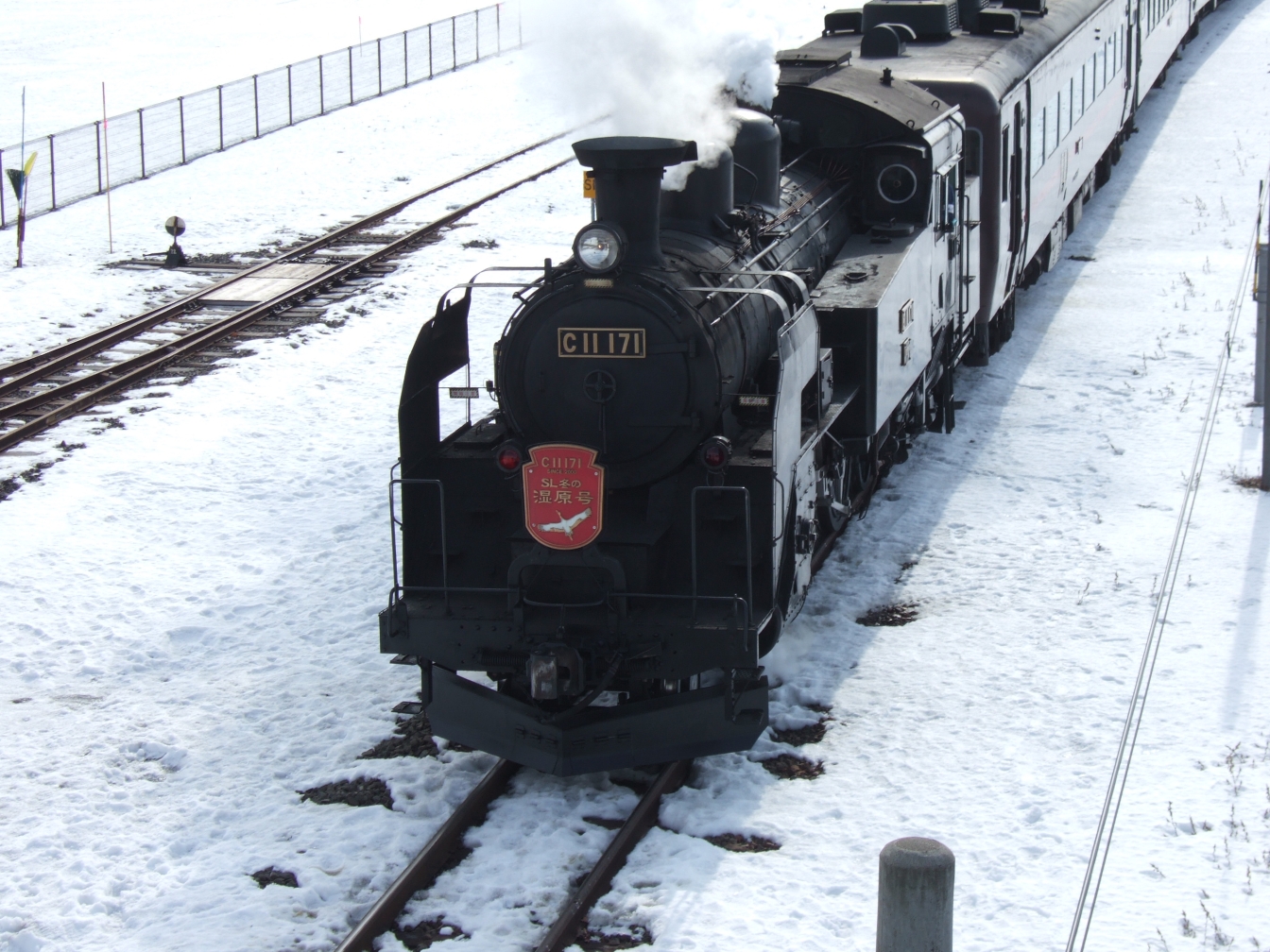 JR Hokkaidō's SL Winter Shitsugen Operates
between Kushiro & Kawayu Onsen on the Senmō Main Line on Weekends
& Holidays from January to March. C11 171 & C11-207 are
allocated to the service. This is the only remaining steam operation on
the whole of Hokkaido following budgetary cuts in mid 2014.
JR Hokkaidō's SL Winter Shitsugen Operates
between Kushiro & Kawayu Onsen on the Senmō Main Line on Weekends
& Holidays from January to March. C11 171 & C11-207 are
allocated to the service. This is the only remaining steam operation on
the whole of Hokkaido following budgetary cuts in mid 2014.
Photo: Peter Dibben
HONSHŪ
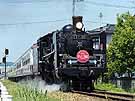 JR East Ban'etsu Monogatari Gō (The Tale of Ban'etsu: Ban'etsu
is a combined name of two geographic regions adjacenting each other,
Iwaki and Echigo.) - the 1999 addition to steam operations. Operates on
JR East's Ban'estu West Line, about 270 km north of Tōkyō on Saturdays
and Sundays over 110 kms. Journey time is about 3 hours and 20 minutes,
going across green landscapes surrounded by densely forested mountains
and mostly along the scenic gorge of the Agano River. The operation
period is from April through December. Haulage is by Niitsu based 1946
built 4-6-2 Pacific C57 180.
JR East Ban'etsu Monogatari Gō (The Tale of Ban'etsu: Ban'etsu
is a combined name of two geographic regions adjacenting each other,
Iwaki and Echigo.) - the 1999 addition to steam operations. Operates on
JR East's Ban'estu West Line, about 270 km north of Tōkyō on Saturdays
and Sundays over 110 kms. Journey time is about 3 hours and 20 minutes,
going across green landscapes surrounded by densely forested mountains
and mostly along the scenic gorge of the Agano River. The operation
period is from April through December. Haulage is by Niitsu based 1946
built 4-6-2 Pacific C57 180.
Photo: C57180 rolls past Gosen station hauling the "Ban'etsu
Monogatari Gō," by Hiroshi Naito May 1999.
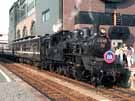 Mooka Railway - 1944 buit 2-6-4 tank C11 325 or 1933 built 2-6-2
tank C12 66 operates one return service on Saturdays and Sundays over
the 41.9 kms line between Shimodate (JR East's Mito Line) and Motegi. Journey
time: 81 minutes from Shimodate 89 minutes from Motegi. For more
detailed information, refer to Hiroshi
Naito's Mooka Railway report & Hiroshi Naito's Steam
Engine C11325 on Mooka Railway.
Mooka Railway - 1944 buit 2-6-4 tank C11 325 or 1933 built 2-6-2
tank C12 66 operates one return service on Saturdays and Sundays over
the 41.9 kms line between Shimodate (JR East's Mito Line) and Motegi. Journey
time: 81 minutes from Shimodate 89 minutes from Motegi. For more
detailed information, refer to Hiroshi
Naito's Mooka Railway report & Hiroshi Naito's Steam
Engine C11325 on Mooka Railway.
Photo: C1266 at Mooka station, by Anthony Robins.
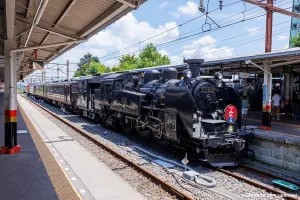
Tobu Railway's SL Taiju
- This service operates on the outer reaches of the extensive Tobu
network in Tochigi Prefecture. It operates all year round on two routes
from Shimoimaichi to Kinugawa Onsen and Tobu Nikko with ex JNR Steam
Locomotives C11-207, C11-325 & C11-123.
Photo: Stephen Turner
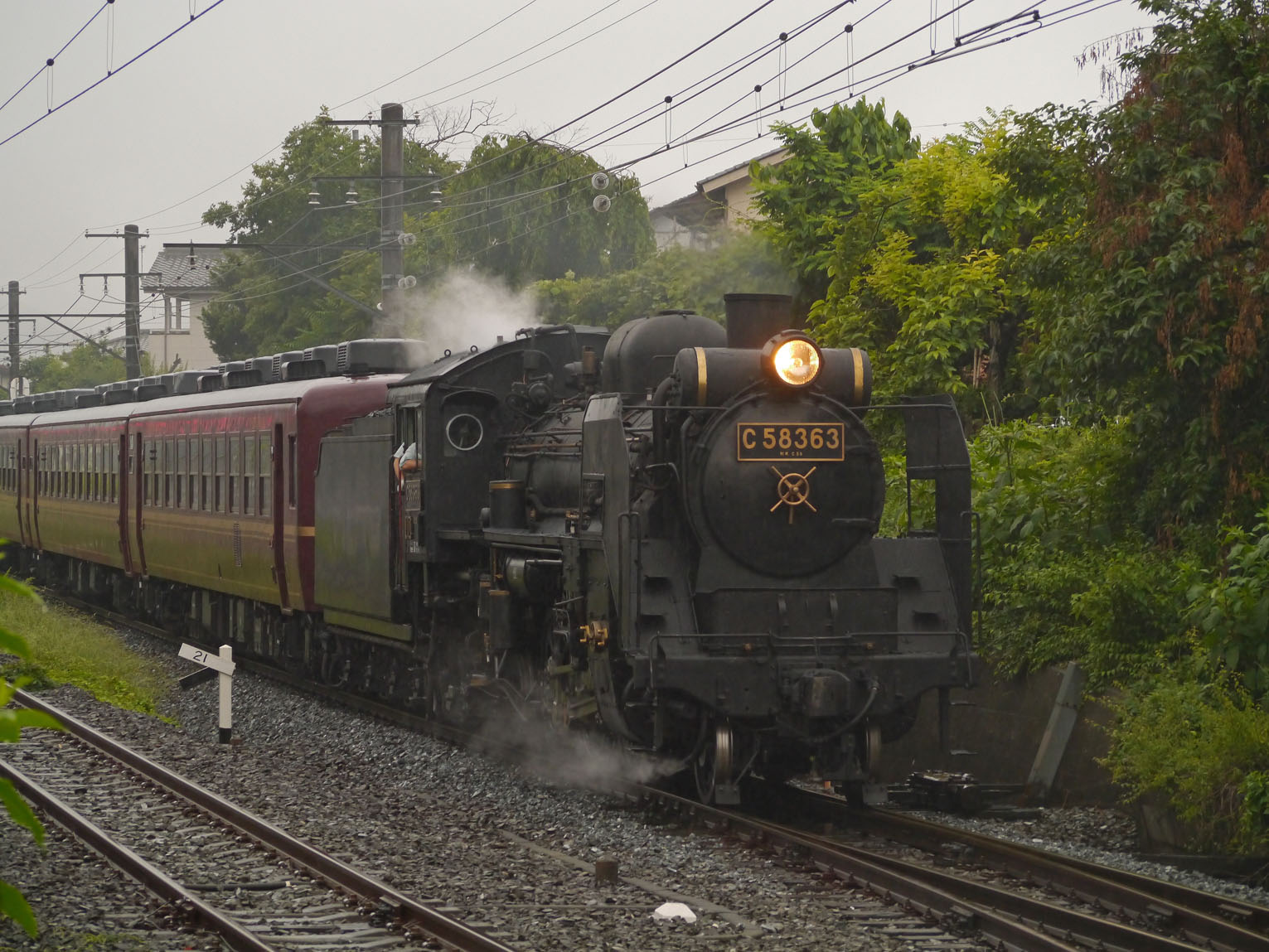 Chichibu Railway's Paleo Express - 1944 built 2-6-2 C58 363
operates one service on Sundays, holidays and some Saturdays on the
Chichibu Railway between Kumagaya (JR East's Takasaki Line, Jōetsu/Nagano Shinkansen) and Mitsumineguchi. The
locomotive is maintained by JR East at Takasaki. For more detailed
information, refer to Hiroshi
Naito's Chichibu Railway report.
Journey time: 156 to 163 minutes from Kumagaya, 135 to 142 minutes from
Mitsumineguchi.
Chichibu Railway's Paleo Express - 1944 built 2-6-2 C58 363
operates one service on Sundays, holidays and some Saturdays on the
Chichibu Railway between Kumagaya (JR East's Takasaki Line, Jōetsu/Nagano Shinkansen) and Mitsumineguchi. The
locomotive is maintained by JR East at Takasaki. For more detailed
information, refer to Hiroshi
Naito's Chichibu Railway report.
Journey time: 156 to 163 minutes from Kumagaya, 135 to 142 minutes from
Mitsumineguchi.
Photo: Hiroshi
Naito.
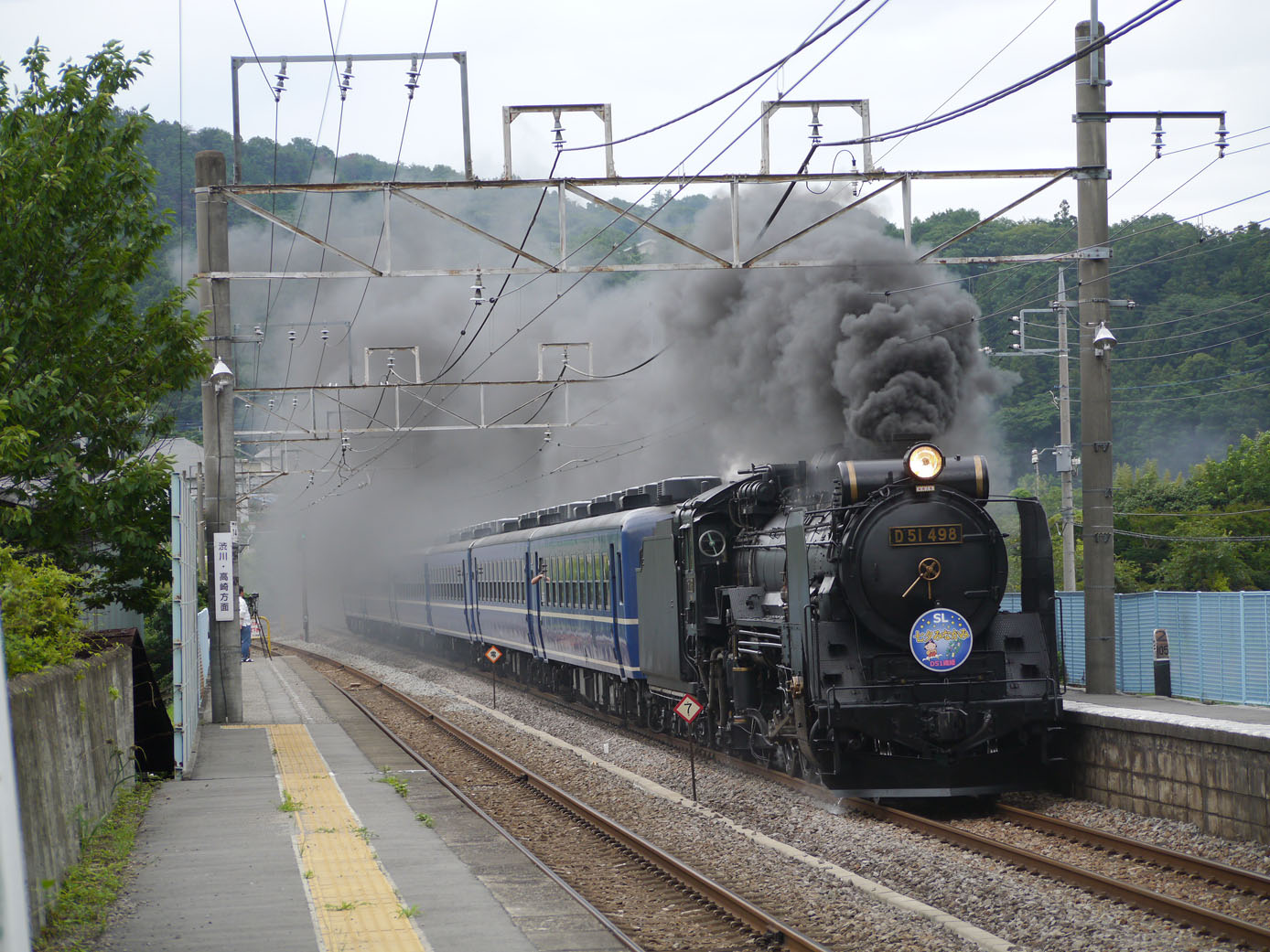
JR East's SL Minakami Gō - 1940 built 2-8-2 D51 498 operates
services on some weekends between Takasaki and Minakami, a 59.1 kms
section of JR East's Jōetsu Line. This service has run on occasion as
the Okutone-Gō, Ozashiki Yutori-Gō & White Christmas-Gō. The
service also occasionally runs as the EL
Minakami
using classic Electric Locomotives from the EF55, EF58 & EF64
classes with some services being worked by both Steam & Electics.
Journey time: 104 minutes from Takasaki, 99 minutes from
Minakami.
Photo: Hiroshi Naito
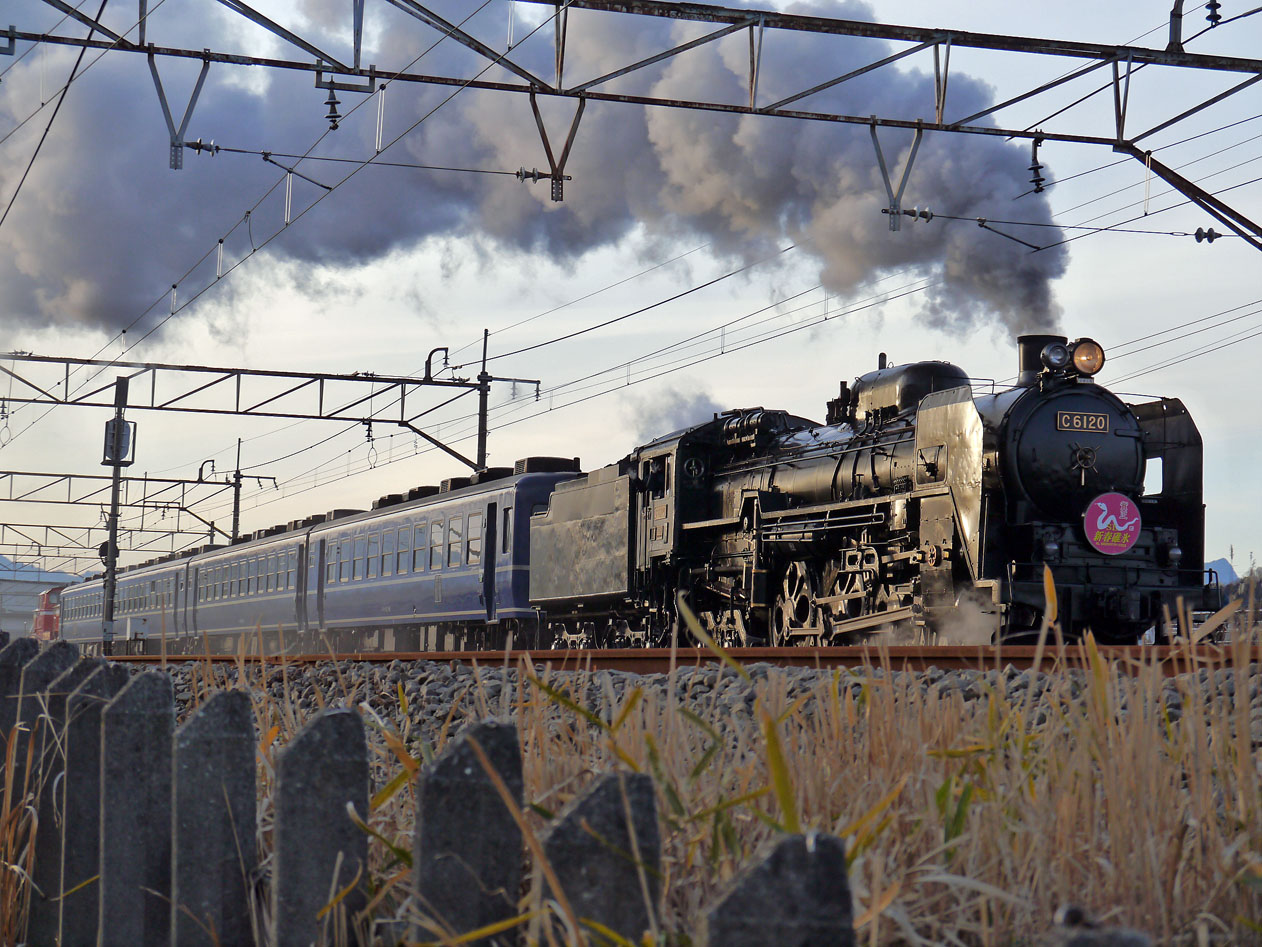
JR East's SL Usui Gō -
Uses similar equipment to the SL Minakami above, however operates on
the remaining section of the Shin'etsu Main Line between Takasaki &
Yokokawa on a seasonal basis.
Photo: Hiroshi Naito
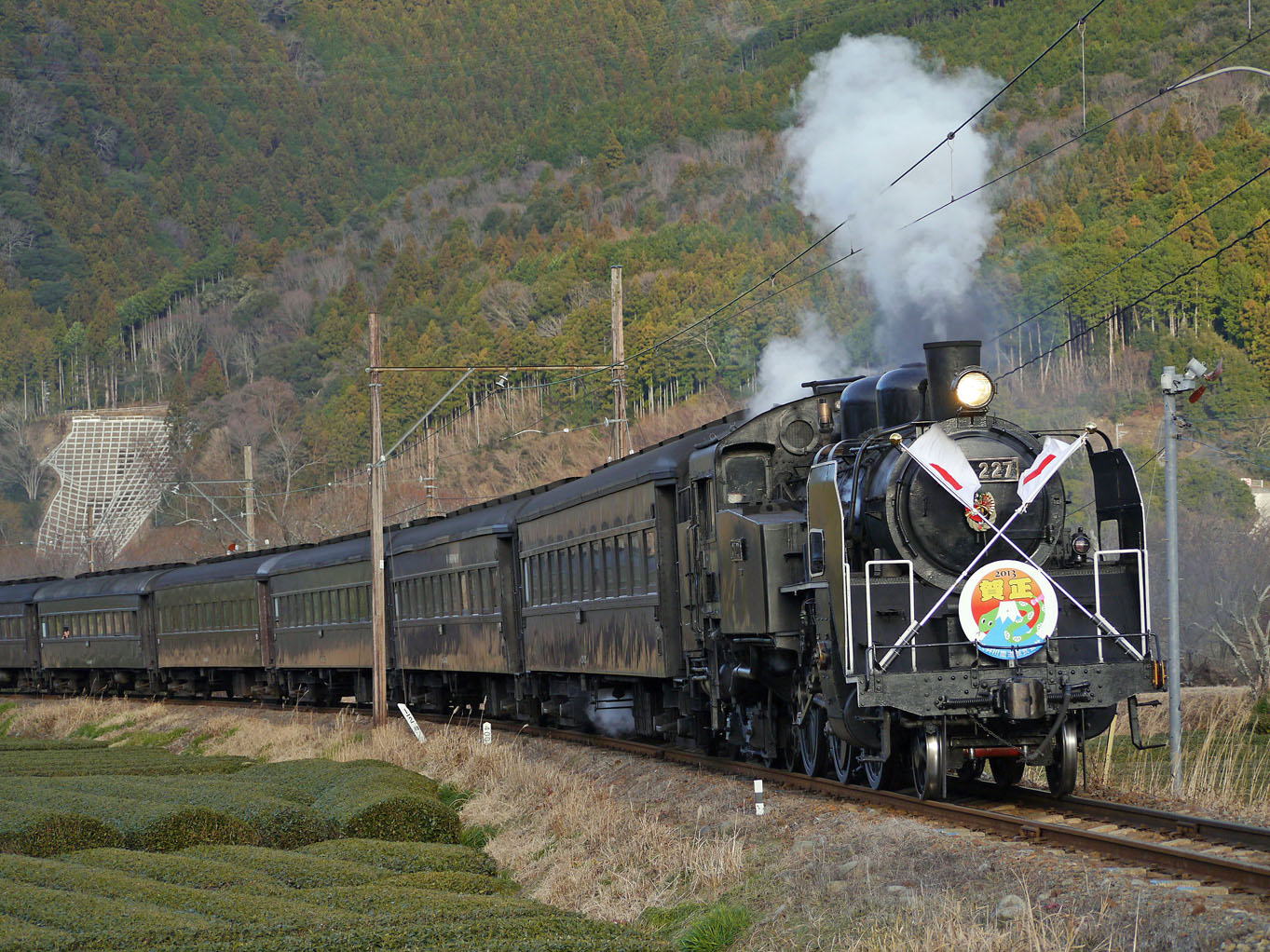 Ōigawa Railway - operates between one and
three services on around 300 days a year over 39.5 kms between Kanaya
(JR Tōkai's Tōkaidō Main Line) and Senzu. Journey time : 78 to 80 minutes from Kanaya, 78 to 82
minutes from Senzu. Features electric pilot over gradient between
Kanaya and Shin-Kanaya. Extensive collection of historic static and
working steam and electric stock. Mountain railway (Ikawa Line),
including Apt section, runs northwards from Senzu. For more detailed
information, refer to Hiroshi
Naito's Ōigawa Railway report
Ōigawa Railway - operates between one and
three services on around 300 days a year over 39.5 kms between Kanaya
(JR Tōkai's Tōkaidō Main Line) and Senzu. Journey time : 78 to 80 minutes from Kanaya, 78 to 82
minutes from Senzu. Features electric pilot over gradient between
Kanaya and Shin-Kanaya. Extensive collection of historic static and
working steam and electric stock. Mountain railway (Ikawa Line),
including Apt section, runs northwards from Senzu. For more detailed
information, refer to Hiroshi
Naito's Ōigawa Railway report
Photo: Hiroshi Naito
 JR West's SL Kita Biwako Gō (North Biwa Lake) - a relatively
recent addition to steam operations. Operates on certain Saturdays and
Sundays over 22.4 kms (JR West Hokuriku Main Line from Maibara to Kinomoto).
Journey time 50 to 58 minutes. Haulage is by Kyoto based 1937 built
4-6-2 C57 1 and/or 1939 built C56 160, when not in use on the service
below.
JR West's SL Kita Biwako Gō (North Biwa Lake) - a relatively
recent addition to steam operations. Operates on certain Saturdays and
Sundays over 22.4 kms (JR West Hokuriku Main Line from Maibara to Kinomoto).
Journey time 50 to 58 minutes. Haulage is by Kyoto based 1937 built
4-6-2 C57 1 and/or 1939 built C56 160, when not in use on the service
below.
Photo: C571 after being uncoupled at Kinomoto, by Anthony
Robins
 JR West's SL Yamaguchi Gō - 1937 built 4-6-2 operates over 62.9
kms of the Yamaguchi Line between Shin Yamaguchi (known as Ogōri until
2003) to Tsuwano at weekends, sometimes double-heading with 1939 built
2-6-0 C56 160. Journey time: 120 minutes from Ogori. 99 minutes from
Tsuwano.
Information about the service running timetable can be found at http://www.c571.jp (Japanese Text).
JR West's SL Yamaguchi Gō - 1937 built 4-6-2 operates over 62.9
kms of the Yamaguchi Line between Shin Yamaguchi (known as Ogōri until
2003) to Tsuwano at weekends, sometimes double-heading with 1939 built
2-6-0 C56 160. Journey time: 120 minutes from Ogori. 99 minutes from
Tsuwano.
Information about the service running timetable can be found at http://www.c571.jp (Japanese Text).
Photo: C57 1 with C56 160 on the Yamaguchi Line, by
Carl Miller.
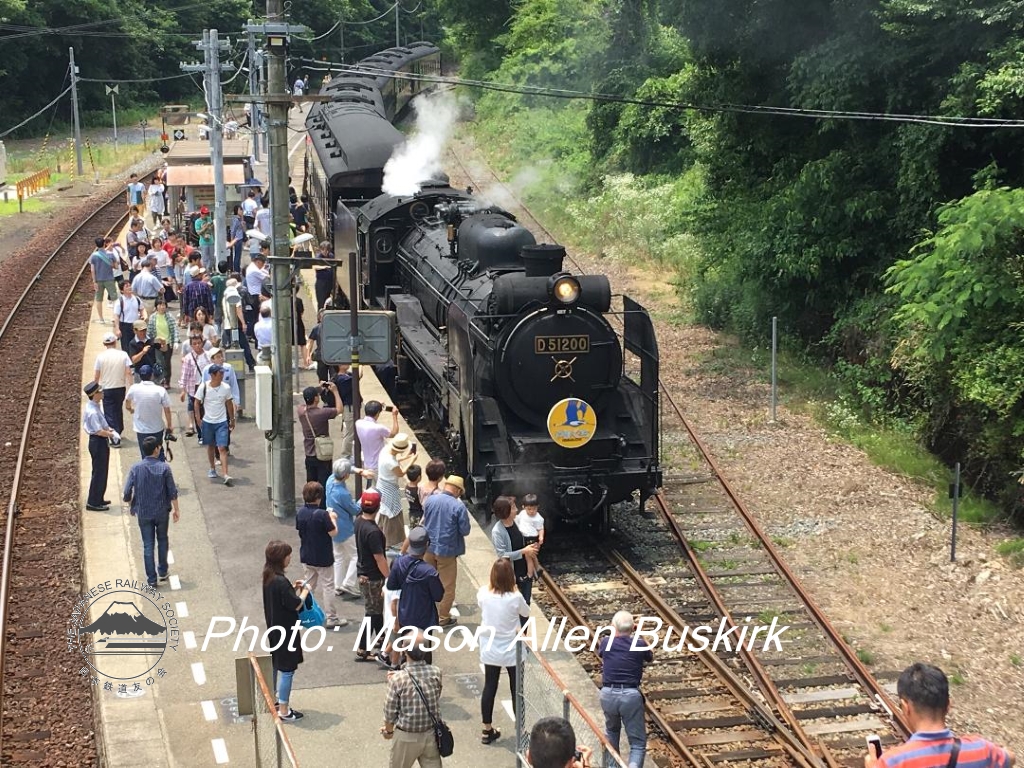
Photo: 1938 built D51 200 hauling the 'SL Yamaguchi' stopping for photos at Niho Station on 22nd June 2019 by Mason Allen Buskirk.
KYŪSHŪ
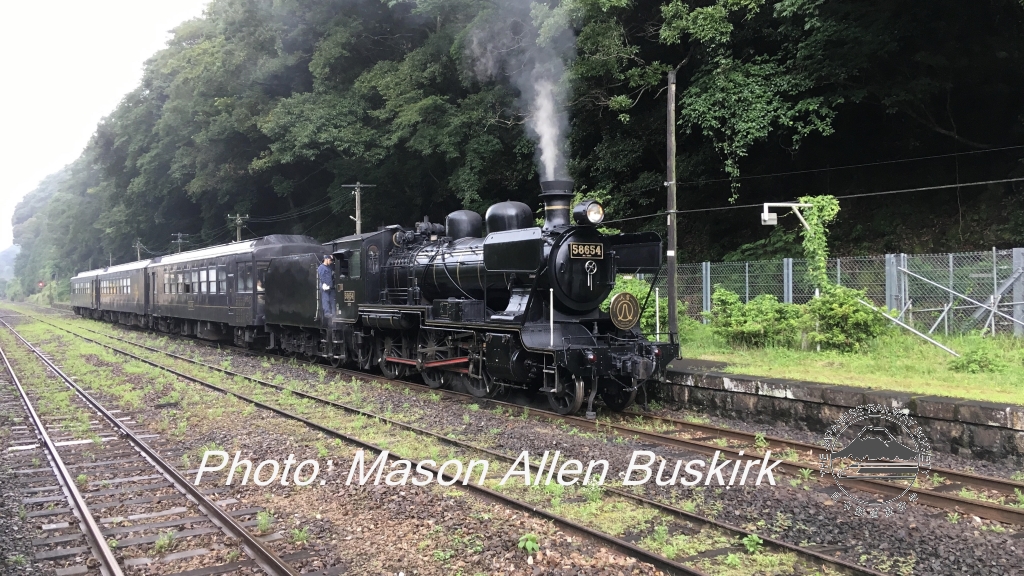 JR Kyūshū SL Hitoyoshi Gō - Used to run from Kumamoto to
Hitoyoshi most weekends and public holidays over an 84 km distance, the
first 33 kms over the Kagoshima Main Line, the remainder on the challenging
and scenic Hisatsu Line. Journey time was 2.5 Hrs in each direction with
a 2 hour break at Hitoyoshi. The service was operated by locomotive
58654, which previously operated the 'SL Aso Boy Gō' (see Section
'Former Operations' below).
JR Kyūshū SL Hitoyoshi Gō - Used to run from Kumamoto to
Hitoyoshi most weekends and public holidays over an 84 km distance, the
first 33 kms over the Kagoshima Main Line, the remainder on the challenging
and scenic Hisatsu Line. Journey time was 2.5 Hrs in each direction with
a 2 hour break at Hitoyoshi. The service was operated by locomotive
58654, which previously operated the 'SL Aso Boy Gō' (see Section
'Former Operations' below).
Following
extensive damage to the Hisatsu Line which saw most of the line closed,
the service was later revived to run on the Kagoshima Main Line,
running between Kumamoto and Tosu. 58654 will be retired from service
in early 2024, it is not known whether a replacement locomotive will be
sourced to keep the service running.
Photo:
JGR Class 8620 loco 58654 paused at Shiroishi Station on 27th July 2019
during an SL Hitoyoshi journey from Hitoyoshi to Kumamoto, by Mason Allen Buskirk.
FORMER
OPERATIONS
These Steam services were previously described as active on our
website, however they have since ceased operation.
HOKKAIDO
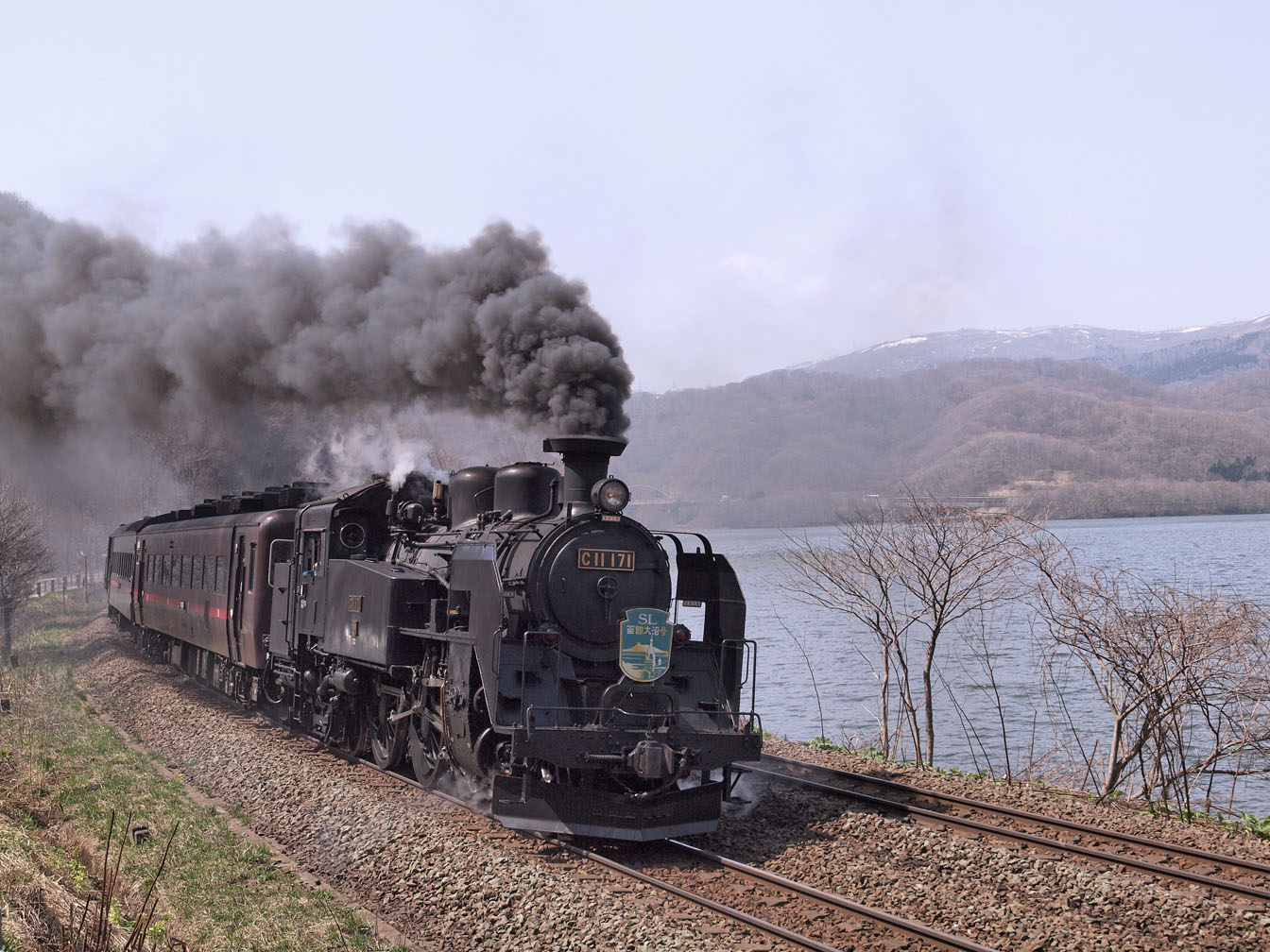 JR Hokkaidō's SL Hakodate Ōnuma Gō - Commencing service on the 28th
April 2001, the service ran between Hakodate & Mori on the
Hakodate Main Line. The line in this area features two deviations to
avoid severe gradients facing Down (towards Sapporo) trains on the
original route via Nagareyama Onsen. Down trains travelled via the
deviations to Mori, Up trains returned via the original route. The
journey took approximately 2 hours in each direction with a 3 hours
lay-over at Mori. Service ran Weekends & Holidays in July &
August. This service ceased operating from the final runs in 2014.
JR Hokkaidō's SL Hakodate Ōnuma Gō - Commencing service on the 28th
April 2001, the service ran between Hakodate & Mori on the
Hakodate Main Line. The line in this area features two deviations to
avoid severe gradients facing Down (towards Sapporo) trains on the
original route via Nagareyama Onsen. Down trains travelled via the
deviations to Mori, Up trains returned via the original route. The
journey took approximately 2 hours in each direction with a 3 hours
lay-over at Mori. Service ran Weekends & Holidays in July &
August. This service ceased operating from the final runs in 2014.
Photo: Makoto Onouchi
JR Hokkaidō's SL Niseko Gō -
Operated between Sapporo & Rankoshi on the Hakodate Main Line on
Weekends & Holidays in September & October. C11 171 &
C11-207 are allocated to the service. Note: This service ceased operating from the final runs in 2014.
 JR Hokkaido Suzuran Gō (The Tale of Suzuran: Suzuran is a
flower, a lily of the valley.) The last run of this service was on 10th
October 2006. Operated on JR Hokkaido's Rumoi Main Line, about 120 km
north of Sapporo, on Saturdays and Sundays over 60
kms between Fukagawa and Rumoi. The
operation period was from April through December. Haulage was by
former Asahikawa based 1940 built 2-6-4 tank C11 171 & had a
journey time of 40 minutes
JR Hokkaido Suzuran Gō (The Tale of Suzuran: Suzuran is a
flower, a lily of the valley.) The last run of this service was on 10th
October 2006. Operated on JR Hokkaido's Rumoi Main Line, about 120 km
north of Sapporo, on Saturdays and Sundays over 60
kms between Fukagawa and Rumoi. The
operation period was from April through December. Haulage was by
former Asahikawa based 1940 built 2-6-4 tank C11 171 & had a
journey time of 40 minutes
Photo: C11 171 rolls along an up-gradient hauling the
"Suzuran Gō," Photo by Kiyoshi Shinozawa.
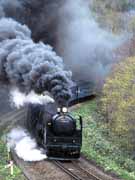 C62
Niseko Gō
- Operation of this train between Otaru and Niseko (Hakodate Main Line)
ceased on 3rd November 1995, as the 4-6-4 C62 locomotive,
C62 3 required
an extensive and costly overhaul.
C62
Niseko Gō
- Operation of this train between Otaru and Niseko (Hakodate Main Line)
ceased on 3rd November 1995, as the 4-6-4 C62 locomotive,
C62 3 required
an extensive and costly overhaul.
Photo: Kiyoshi Shinozawa.
HONSHŪ
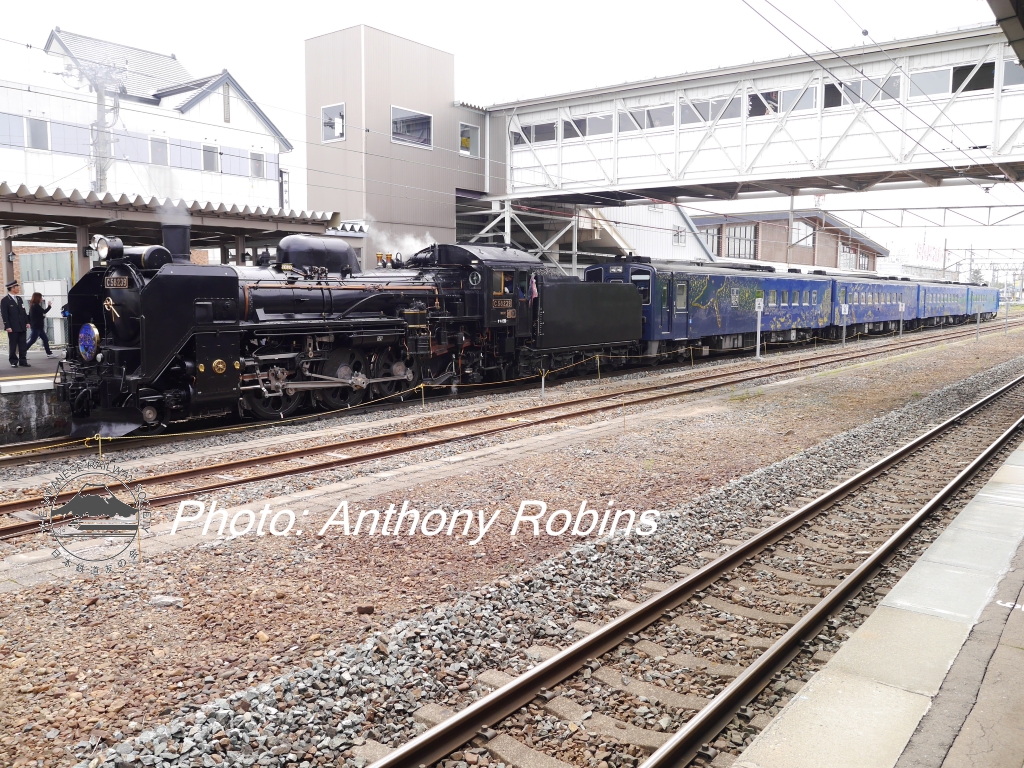 JR East's SL Ginga Gō - The SL service launched in April 2014 and featured C58 239 hauling a 4
car set of former KiHa 141 DMU's rebuilt as passenger
JR East's SL Ginga Gō - The SL service launched in April 2014 and featured C58 239 hauling a 4
car set of former KiHa 141 DMU's rebuilt as passenger
cars on the JR
East Kamaishi Line between Hanamaki (JR East Tōhoku Main Line) and
Kamaishi. C58 239 itself spent many years in a Morioka Park as
plinthed
locomotive before being selected by JR East to be returned to service
following an extensive restoration. The service was launched in a bid
to boost
tourism in one of the areas that bore the brunt of the 2011
Tōhoku earthquake and tsunami. The service ran on a seasonal
basis until June 2023.
Photo: 1940 built C58 239 waiting to depart from Hanamaki with the 'SL Ginga' for Kamaishi on 5th May 2015 by Anthony Robins
KYŪSHŪ
JR Kyūshū SL Aso Boy Gō- 1922 built 2-6-0 58654 operated over
58.7
kms of the Hōhi Main Line from Kumamoto to Miyaji. Operation ceased
with the last run on 27th November 2005. It was operated at
weekends & holidays. Journey time was 154 minutes from Kumamoto and
115 minutes
from Miyaji.
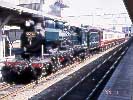
Steam train Aso Boy behind steam engine 58654 at Kumamoto.
Photo: Anthony Robins
|

A side view of steam engine 58654 on a turntable at Miyaji.
Photo: Anthony Robins
.
|
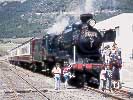
Asoboy waiting for return work at Miyaji.
Photo: Anthony
Robins
|
[Home Page]
 JR Hokkaidō's SL Winter Shitsugen Operates
between Kushiro & Kawayu Onsen on the Senmō Main Line on Weekends
& Holidays from January to March. C11 171 & C11-207 are
allocated to the service. This is the only remaining steam operation on
the whole of Hokkaido following budgetary cuts in mid 2014.
JR Hokkaidō's SL Winter Shitsugen Operates
between Kushiro & Kawayu Onsen on the Senmō Main Line on Weekends
& Holidays from January to March. C11 171 & C11-207 are
allocated to the service. This is the only remaining steam operation on
the whole of Hokkaido following budgetary cuts in mid 2014.
















